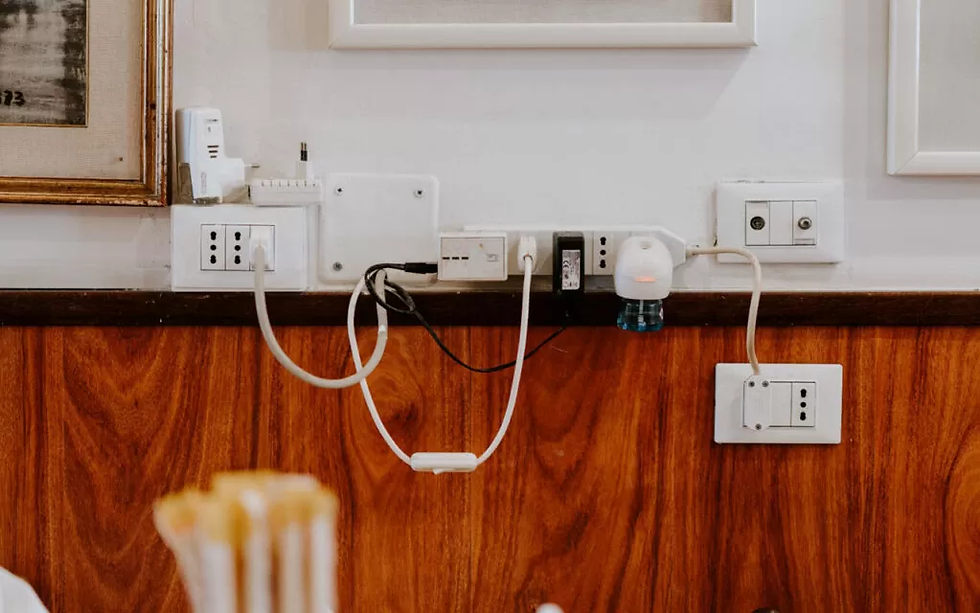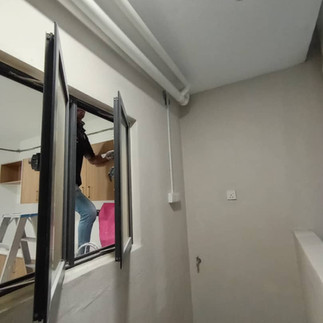Wiring Dapur – Tips for Safety, Socket Placement & Appliance Use
- Nabihah
- Aug 15
- 3 min read
Table of Contents

Introduction
Safe and efficient kitchen wiring is essential for your home’s comfort and safety.
With high-powered electrical appliances like microwaves, ovens, and air fryers becoming more common in modern kitchens, proper wiring plays a vital role in preventing fire hazards and equipment damage.

Plan Socket Placement Strategically
Smart socket layout makes everyday kitchen tasks more convenient.
Install sockets near work areas like countertops and away from sinks or wet zones. Allocate dedicated sockets for fixed appliances such as refrigerators, ovens, and range hoods.
Understand Power Requirements for Kitchen Appliances
Know the voltage and current needs for each appliance.
Some appliances require a special 15-amp socket with an individual switch, especially ovens and induction cookers. Ensure that wiring cables and plugs match the current ratings of each appliance.

Use MCB and ELCB for Electrical Safety
Install Miniature Circuit Breakers (MCB) and Earth Leakage Circuit Breakers (ELCB).
MCBs protect circuits from overcurrent, while ELCBs detect leakage currents and prevent electric shocks. Make sure your main electrical panel includes both for complete protection.
Avoid Overloading Power Sockets
Avoid using multi-plugs excessively for high-powered appliances.
Use dedicated sockets for devices like water heaters, blenders, and microwaves. Don’t rely on extension plugs as a permanent solution—they can overheat and pose fire risks.
Work with Certified Electricians
Always hire a certified electrician for kitchen wiring installations.
Avoid DIY work when it comes to permanent wiring. Licensed electricians ensure that installations comply with national electrical codes and safety standards.
Choose Weather-Resistant and Heat-Resistant Fittings
Kitchen environments can be hot and humid.
Use fittings and wiring insulation that can withstand heat and moisture. Choose SIRIM-approved products that are designed for use in kitchen conditions to avoid early wear and electrical risks.
Label Your Circuit Breakers Clearly
Circuit identification saves time and increases safety.
Label each circuit on your distribution board clearly, especially those dedicated to kitchen appliances. This makes it easier to shut off power quickly in case of emergency or during repairs.
Did You Know?
The kitchen is one of the highest-risk areas for electrical fires in a home.
According to fire safety data, most residential fires are caused by short circuits and socket overloading. Proper kitchen wiring can significantly reduce this risk.

Conclusion
Safe kitchen wiring requires proper planning, understanding of appliance needs, and professional installation. Don’t overlook electrical safety—it plays a major role in protecting your home and family.
FAQs
1. How many sockets are recommended for a modern kitchen?
At least 6–8 fixed sockets are recommended, not including those used for mobile appliances.
2. Do electric ovens need special wiring?
Yes, ovens typically require a 15-amp circuit with a dedicated switch and socket.
3. Can I wire my kitchen myself?
It is not recommended. Hire a licensed electrician to ensure safety and compliance.
4. What is an ELCB and why is it important?
An ELCB detects current leakage to the ground and cuts off the power supply to prevent electric shock.
5. How do I know if my kitchen wiring is safe?
Schedule regular inspections with a certified electrician and watch for warning signs like burning smells, warm sockets, or frequent tripping.
Need safe kitchen wiring that meets all safety standards?
⚡📲 Contact our certified electricians today or WhatsApp us now for a free quote 👉 Free quotation today!









Comments